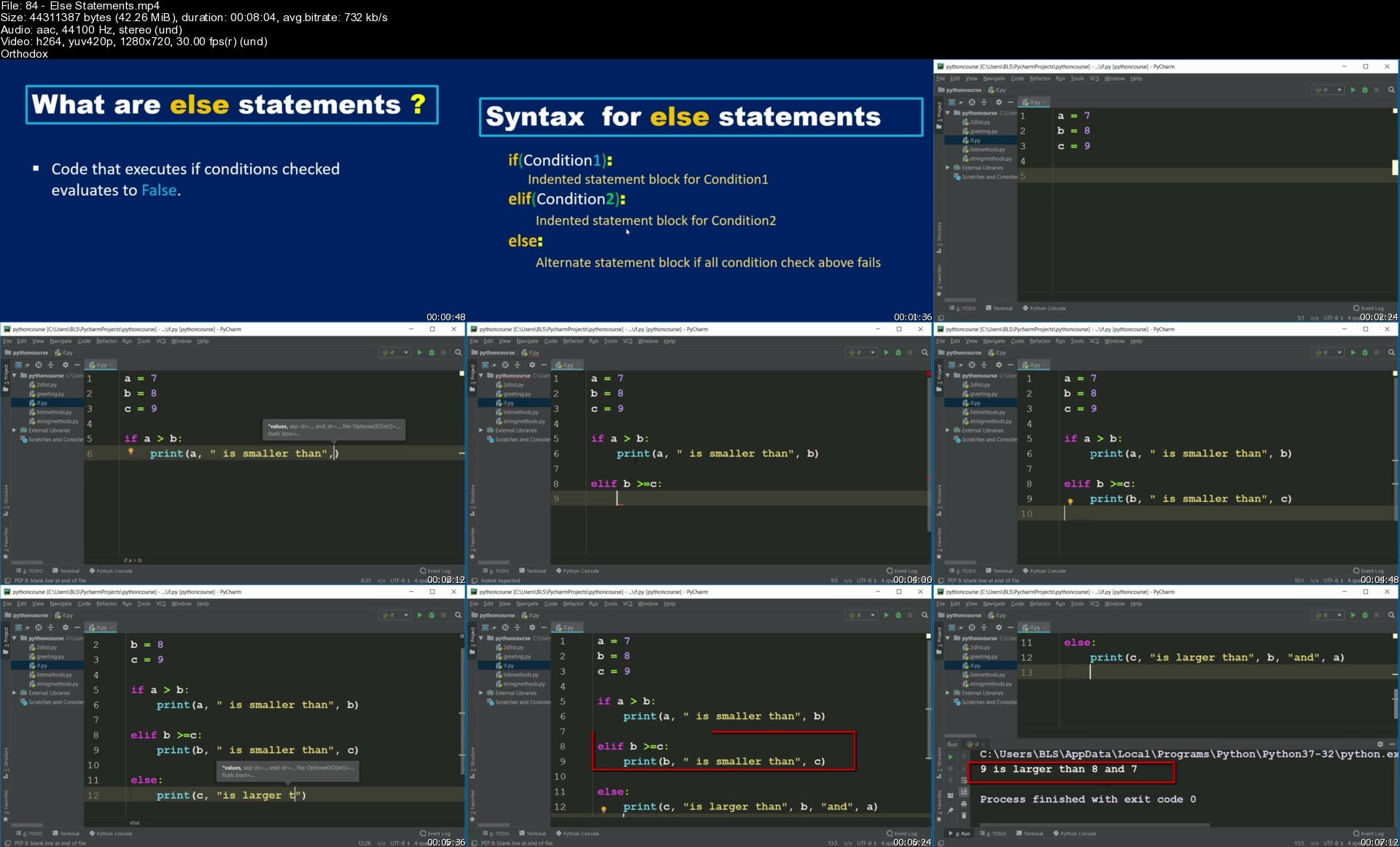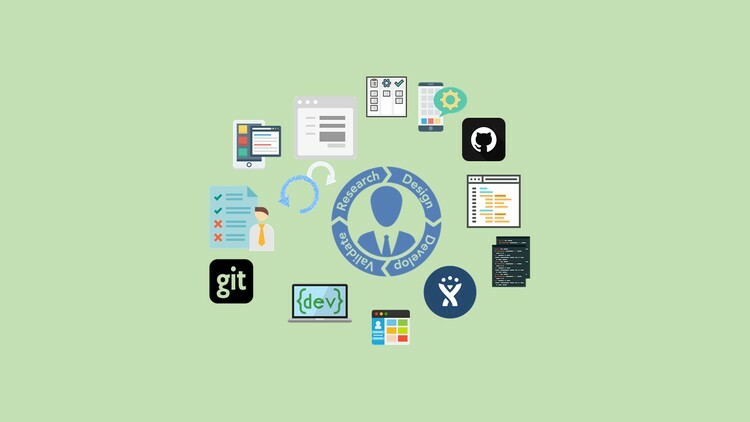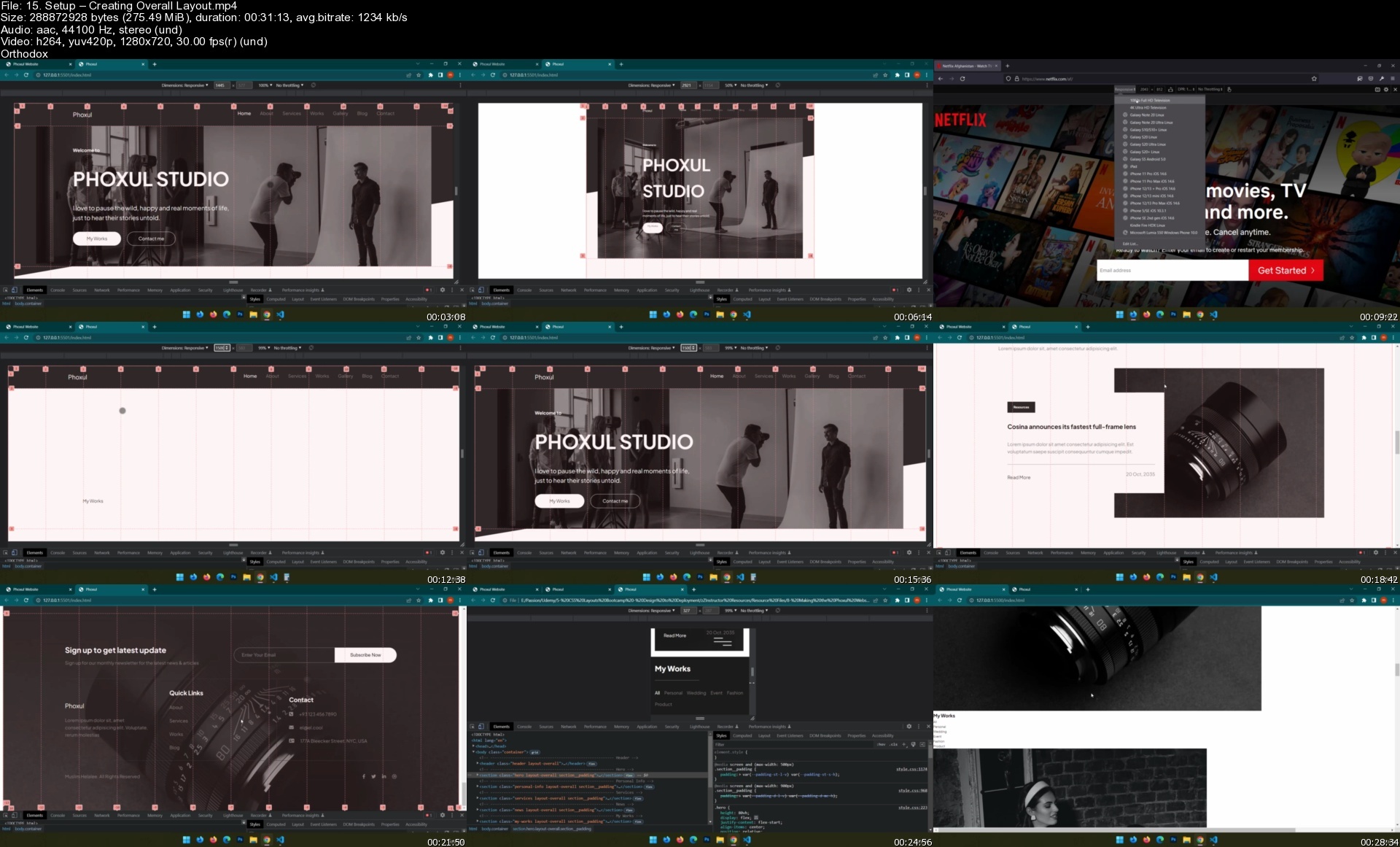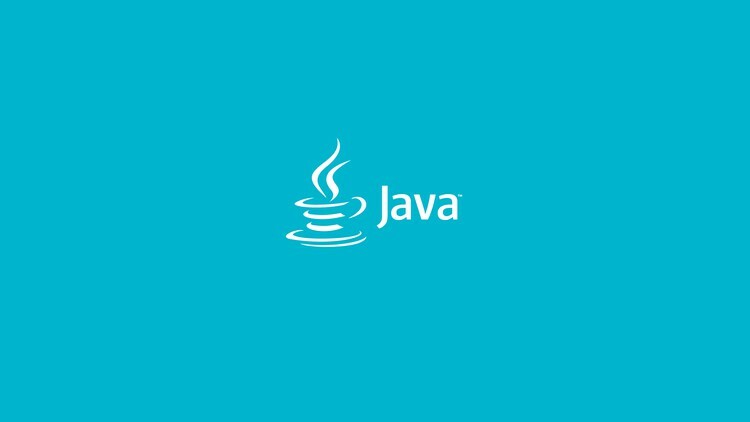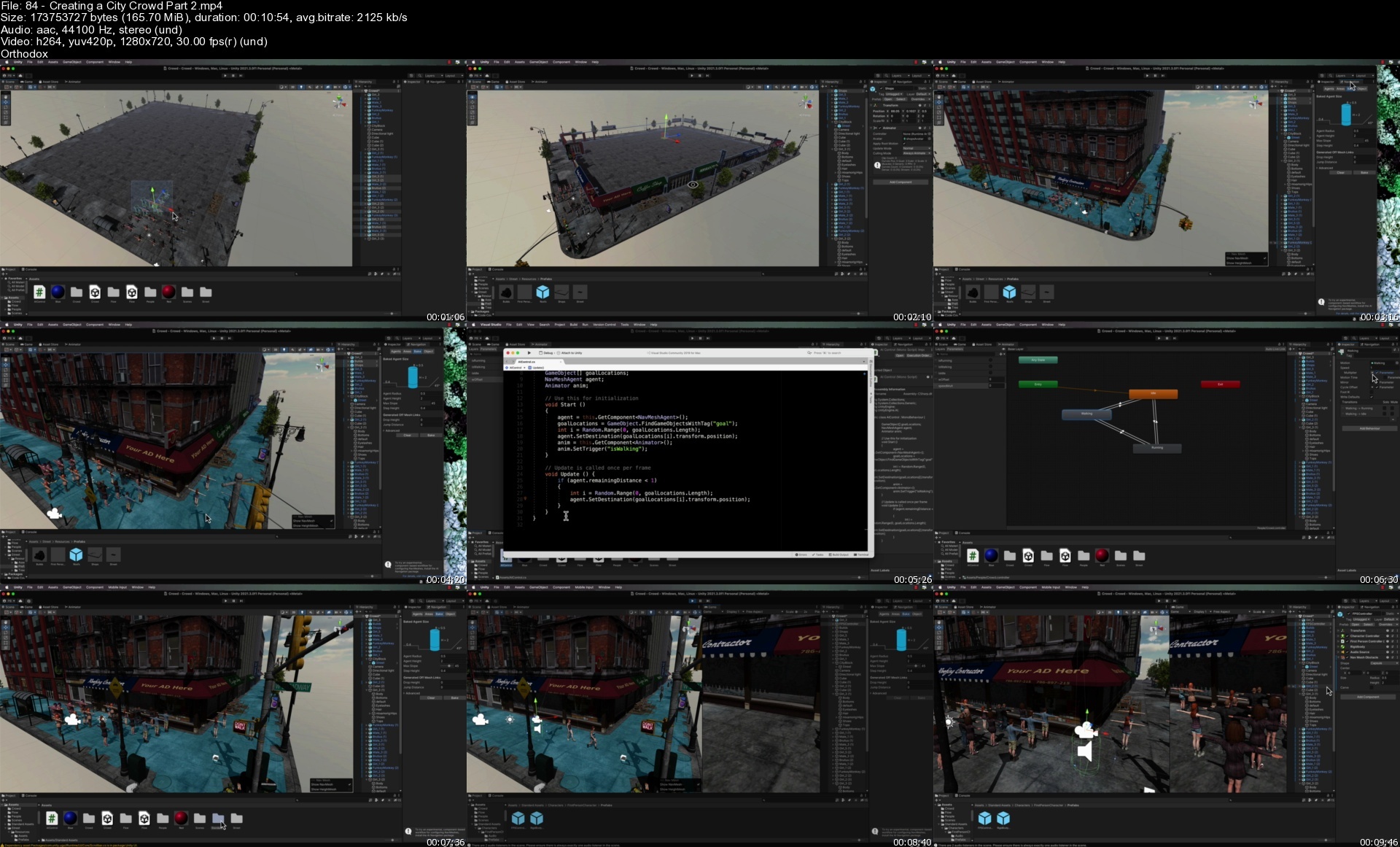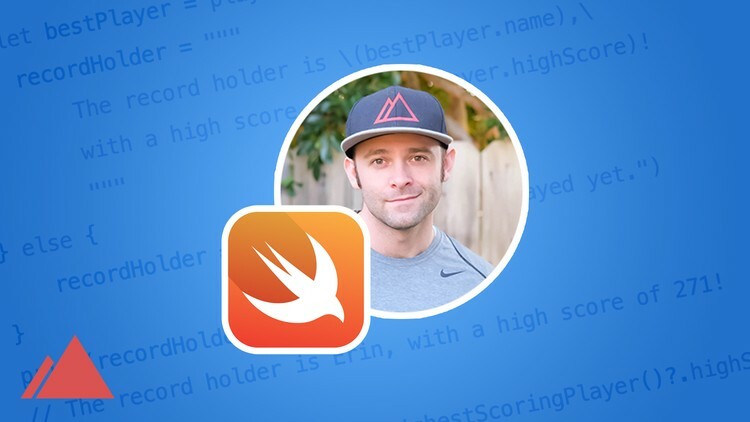How To Create A Website: An Html Tutorial And Css Tutorial
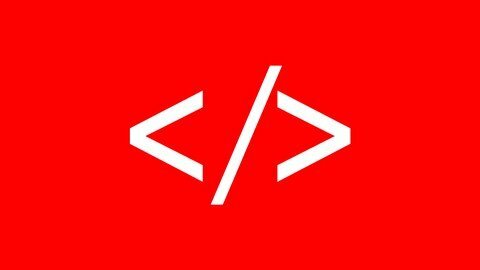
How To Create A Website: An Html Tutorial And Css Tutorial
Last updated 4/2022
MP4 | Video: h264, 1280x720 | Audio: AAC, 44.1 KHz
Language: English | Size: 20.28 GB | Duration: 31h 54m
Learn How To Make Websites - HTML - CSS - Flexbox - Transitions - Animations - SVGs - The Box Model - CSS Specificity
What you'll learn
Build beautiful webpages using today's best practices
Understand the importance of performance and build performant websites
Acquire an outstanding foundation in the fundamentals of web programming
Taught by a professor with 20 years of experience teaching individuals of all abilities
Achieve mastery in the understanding and application of HTML & CSS
Apply cutting-edge techniques such as Flexbox and SVGs
Requirements
No prerequisite knowledge is required to take this course. This course starts at the very beginning and will teach you everything you need to know to be an outstanding web developer.
Description
You can learn to build websites quickly and easily if it is taught correctly.This course will show you how to build websites. It will give you a solid foundation in building websites. By the end of this course, you will have strong skills in creating websites with HTML & CSS. As with any craft, the fundamentals are essential. If you have a strong foundation in the fundamentals, you will be poised to grow and develop professionally as a craftsperson who knows their craft.My name is Todd McLeod and I began creating websites in 1997. I began teaching how to create websites in 2001. I am tenured faculty in California and I have taught individuals of all ability levels how to create websites. After completing this course, you will have mastered the fundamentals of creating websites with HTML & CSS. Here are the highlights of what you will receive in this class:32 hours of on-demand videoExtensive hands-on exercisesSolutions to the hands-on exercisesAccess to all of the code used in the course74 exclusive resources which you can download286 page book on the fundamentals of HTML and CSSLifetime access to everything in this course100% money-back satisfaction guaranteeA certificate of completionHere are the highlights of what you will learn in this course:Learn the art of building websitesUnderstand what it takes to succeedDiscover Google's Teapot, how to change the news, and how to play the Dinosaur video gameGain insight into the history of the Internet and the World Wide WebLearn about the best documentation for building websitesUnderstand how the World Wide Web worksDiscover new ways to use your web browserAcquire the ability to highlight webpagesLearn all about developer toolsGain the ability to use an IDE (integrated development environment)Acquire the ability to use git and github for version controlLearn how to code in HTML and CSSGain a solid foundation in HTML and CSSAcquire the ability to use emmetUnderstand relative and absolute URLsLearn about CSS rule-sets and CSS selectorsLearn how to link CSS documents to HTML documentsLearn all about the layout of webpages including the box-model and flexboxGain the ability to work with older layout modalities such as position and floatMaster the nuances of CSS specificityGain the ability to correctly structure HTML documentsAcquire mastery over media-queriesLearn the "above the fold" design patternMaster using SVG's to optimize your images and make your sites more performantAcquire the ability to work with advanced techniques such as transitions and animationsIf you want to learn how to create websites, the first place to begin is with the fundamentals of HTML & CSS. The first place to begin is with this course. This class is guaranteed to teach you how to build websites. Once enrolled, you will have access to this Excel course for the rest of your life. Described as "fun" and "amazing" and "life changing," Todd McLeod's website course will forever transform your life. Try this course for yourself and see how quickly and easily you too can learn to build websites.
Overview
Section 1: Introduction
Lecture 1 Welcome
Lecture 2 Course outline
Lecture 3 Code resources
Lecture 4 How To Succeed
Lecture 5 The Art of Building Websites
Section 2: Getting Started
Lecture 6 Having Fun #1 - HTTP Status Codes
Lecture 7 Having Fun #2 - Making The News
Lecture 8 Having Fun #3 - The Dinosaur Video Game
Section 3: Understanding The Internet & World Wide Web
Lecture 9 History of the Internet
Lecture 10 History of the World Wide Web
Lecture 11 Who Controls the Internet & WWW?
Lecture 12 Web Documentation
Lecture 13 Highlighting Webpages & Chrome Extensions
Lecture 14 How The Web Works
Section 4: An Introduction to HTML
Lecture 15 Your First Webpage
Lecture 16 Anatomy of an HTML Page
Lecture 17 HTML Terminology
Section 5: An Introduction to CSS
Lecture 18 A Separation of Concerns
Lecture 19 CSS Rule-sets
Lecture 20 Linking CSS to HTML
Lecture 21 Multiple CSS Selectors
Section 6: Configuring Your Environment
Lecture 22 Integrated Development Environments
Lecture 23 WebStorm
Lecture 24 Atom.io
Lecture 25 Sublime
Lecture 26 Dreamweaver
Section 7: Becoming Skilled with Github
Lecture 27 Github Overview
Lecture 28 Git & Github - The Story
Lecture 29 Setting up git and github on Windows
Lecture 30 Setting up git and github on Mac
Lecture 31 Terminal Essentials
Lecture 32 Creating a "Master" Local Git Repository
Lecture 33 Creating an "Origin/Master" Remote Github Repository
Lecture 34 Using Github - Basic Commands
Lecture 35 Using Github - Deleting A Repo
Section 8: HTML Essentials
Lecture 36 Section Overview
Lecture 37 FIle Naming Conventions
Lecture 38 Folder Naming Conventions
Lecture 39 Opening A Project in Webstorm
Lecture 40 Essential Tags
Lecture 41 Emmet.io
Lecture 42 Modifying Webstorm Formatting
Lecture 43 Tag Attributes
Lecture 44 Relative URLs
Lecture 45 Absolute URLs
Lecture 46 Comments
Lecture 47 Hands-On Exercises
Lecture 48 Hands-On Exercises - Solutions
Section 9: CSS Essentials
Lecture 49 Section Overview
Lecture 50 All HTML Tags & Attributes, All CSS Selectors & Properties
Lecture 51 border Property
Lecture 52 border-radius Property
Lecture 53 display Property
Lecture 54 padding & margin Properties
Lecture 55 Box Model
Lecture 56 box-Sizing Property
Lecture 57 Review
Lecture 58 Hands-On Exercises
Lecture 59 Hands-On Exercises - Solutions
Section 10: CSS Selectors
Lecture 60 Section Overview
Lecture 61 CSS Resets
Lecture 62 CSS Selectors: element, class, id
Lecture 63 Selectors: attribute
Lecture 64 Selectors: pseudo-classes
Lecture 65 Selectors: pseudo-class :focus
Lecture 66 Selectors: pseudo-class nth child - part I
Lecture 67 Selectors: pseudo-class nth child - part II
Lecture 68 Selectors: pseudo-class typography
Lecture 69 Selectors: nested selectors
Lecture 70 margin: 0 auto & The Display Property
Lecture 71 Hands-On Exercise - The Surfer Page
Lecture 72 Hands-On Exercise - The Surfer Page - Solution
Lecture 73 Hands-On Exercises
Lecture 74 Hands-On Exercises - Solutions I
Lecture 75 Hands-On Exercises - Solutions II
Lecture 76 Review
Section 11: CSS Order & Specificity
Lecture 77 Section Overview
Lecture 78 The Browser's Application of CSS
Lecture 79 Challenge & Solution #1
Lecture 80 Challenge & Solution #2, 3, 4
Lecture 81 Challenge & Solution #5, 6
Lecture 82 Hands-On Exercise
Lecture 83 Hands-On Exercises - Solutions
Lecture 84 Review
Section 12: Formatting Text
Lecture 85 Section Overview
Lecture 86 font Property
Lecture 87 font-family Property
Lecture 88 font-size Property
Lecture 89 font-weight & font-style Properties
Lecture 90 font-variant & text-transform Properties
Lecture 91 line-height Property
Lecture 92 letter-spacing, word-spacing, & color Properties
Lecture 93 Google Fonts
Lecture 94 text-align & text-shadow Properties
Lecture 95 text-decoration Property &
Lecture 96 text-indent Property
Lecture 97 Hands-On Exercises
Lecture 98 Hands-On Exercises - Solutions
Lecture 99 Review
Section 13: Structuring Documents
Lecture 100 Section Overview
Lecture 101 Document Structure - Terminology
Lecture 102 Semantic HTML
Lecture 103 Hands-On Exercises - Semantic HTML
Lecture 104 Hands-On Exercises - Semantic HTML - My Solutions
Lecture 105 Semantic HTML - header, nav, main
Lecture 106 Semantic HTML - article, section
Lecture 107 Semantic HTML - aside & footer
Lecture 108 Semantic HTML - Examples
Lecture 109 Semantic HTML - headings - h1 - h6
Lecture 110 Semantic HTML - figure, figcaption
Lecture 111 Hands-On Exercises
Lecture 112 Hands-On Exercises - Solutions
Lecture 113 Hands-On Exercises - Learning HTML Elements - My Solutions
Lecture 114 Review
Section 14: Layout Fundamentals - Box Model & Display
Lecture 115 Section Overview
Lecture 116 Layout Resources & Review
Lecture 117 Display Property Review
Lecture 118 Hands-On Exercise - Page of Divs
Lecture 119 Hands-On Exercise - Page of Divs - Solution
Lecture 120 Hands-On Exercise - Horizontal Menu
Lecture 121 Hands-On Exercise - Horizontal Menu - Solution
Lecture 122 Taco Shop - Display Property
Lecture 123 Review
Section 15: Layout with Flexbox
Lecture 124 Section Overview
Lecture 125 Understanding Flexbox - Container & Items
Lecture 126 Containers & Creating A Flex Container
Lecture 127 Container Property: flex-wrap
Lecture 128 Container Property: flex-direction (primary-axis & cross-axis)
Lecture 129 Container Property: flex-flow
Lecture 130 Container Property: justify-content
Lecture 131 Container Property: align-items
Lecture 132 Container Property: align-content
Lecture 133 Item Property: align-self
Lecture 134 Item Property: order
Lecture 135 Item Property: flex-grow
Lecture 136 Item Property: flex-shrink
Lecture 137 Item Property: flex-basis
Lecture 138 Item Property: flex
Lecture 139 Hands-On Exercise - Flexbox Froggy
Lecture 140 Hands-On Exercises
Lecture 141 Hands-On Exercises - Solutions - 8 Pages
Lecture 142 Hands-On Exercises - Solutions - 6 Pages
Lecture 143 Review
Section 16: Media Queries
Lecture 144 Section Overview
Lecture 145 Understanding Media Queries
Lecture 146 Min-Width & Max-Width
Lecture 147 Print Media Query
Lecture 148 Media Type & Expressions
Lecture 149 Taco Shop & Scaling Font - Examples
Lecture 150 Responsive Design & Mobile First Design
Lecture 151 Hands-On Exercises
Lecture 152 Hands-On Exercises - Solutions
Lecture 153 Review
Section 17: Flexbox Design Patterns
Lecture 154 Section Overview
Lecture 155 Google's Flexbox Design Pattern #1
Lecture 156 Google's Flexbox Design Pattern #2
Lecture 157 Google's Flexbox Design Pattern #3
Lecture 158 Hands-On Exercises
Lecture 159 Hands-On Exercises - Solutions
Lecture 160 Flexbox Example #1 - Responsive Menu
Lecture 161 Flexbox Example #2 - Above The Fold
Lecture 162 Flexbox Example #3 - Holy Grail Example
Lecture 163 Flexbox Example #4 - Holy Grail Redux
Lecture 164 Hands-On Exercises
Lecture 165 Review
Section 18: Layout with Position
Lecture 166 Section Overview
Lecture 167 Layout Essentials - A Quick Reference
Lecture 168 Position Overview
Lecture 169 Position Fixed
Lecture 170 Position Relative
Lecture 171 Position Absolute
Lecture 172 Taco Shop - Position Property
Lecture 173 Hands-On Exercises
Lecture 174 Hands-On Exercises - Solutions
Lecture 175 Review
Section 19: Layout with Float
Lecture 176 Section Overview
Lecture 177 Float Images & Overflow: Auto
Lecture 178 Float Layout & Clearing Floats
Lecture 179 Float Example - Holy Grail
Lecture 180 Taco Shop - Float Property
Lecture 181 Hands-On Exercises
Lecture 182 Hands-On Exercises - Solutions
Lecture 183 Review
Section 20: Background
Lecture 184 Section Overview
Lecture 185 Background Color
Lecture 186 background-image, background-repeat, background-size
Lecture 187 background-position, background-origin
Lecture 188 background-attachment
Lecture 189 background
Lecture 190 Hands-On Exercises
Lecture 191 Hands-On Exercises - Solutions
Lecture 192 Review
Section 21: Refactor Challenge
Lecture 193 Section Overview
Lecture 194 Analyzing The Starting Files
Lecture 195 inline-block Refactor
Lecture 196 flexbox Refactor
Section 22: Full-Page Above-The-Fold
Lecture 197 Section Overview
Lecture 198 Step #1: HTML Structure
Lecture 199 Step #1: HTML Structure - Solution
Lecture 200 Step #2: Layout
Lecture 201 Step #2: Layout - Solution
Lecture 202 Step #3: background image
Lecture 203 Step #3: background image - Solution
Lecture 204 Step #4: Format Text
Lecture 205 Step #4: Format Text - Solution
Lecture 206 Step #5: Style The Button
Lecture 207 Step #5: Style The Button - Solution
Lecture 208 Step #6: Mobile
Lecture 209 Step #6: Mobile - Solution
Lecture 210 Review
Section 23: Expanding Your Skillset
Lecture 211 Section Overview
Lecture 212 q, blockquote, & cite elements; cite attribute
Lecture 213 pre, samp, code, kbd, abbr elements
Lecture 214 HTML Entities
Lecture 215 Linking Images & Bookmarks
Lecture 216 box-shadow Property
Lecture 217 vertical-align property
Lecture 218 mobile devices - mobile history & font-boosting
Lecture 219 mobile devices - meta viewport width=device-width
Lecture 220 mobile devices - meta viewport initial-scale=1
Lecture 221 meta viewport - picture example
Lecture 222 Review
Section 24: Graphics
Lecture 223 Section Overview
Lecture 224 Colors
Lecture 225 Picking Color Combinations - Adobe Color ( Kuler )
Lecture 226 Image Types - Raster/Bitmap & Vector
Lecture 227 Font Awesome
Lecture 228 Font Awesome - Performance
Lecture 229 Font Awesome - Instructions on Use Review
Lecture 230 Font Awesome to SVG - Adobe Illustrator
Lecture 231 Understanding SVG - Basic SVG Shapes
Lecture 232 SVG Terminology
Lecture 233 SVG Path Element
Lecture 234 SVG Path - More Examples
Lecture 235 SVG Stroke & Fill
Lecture 236 SVG - Notes & Resources
Lecture 237 SVG - Viewbox
Lecture 238 Styling SVGs with CSS
Lecture 239 SVG - Symbol & Use Elements
Lecture 240 Symbol, Use, & CSS
Lecture 241 Symbol with Multiple Paths
Lecture 242 Leave Room For Strokes
Lecture 243 Stroke %
Lecture 244 symbol & use vs img
Lecture 245 Review
Section 25: Full-Page Background
Lecture 246 Section Overview
Lecture 247 Fixed Header
Lecture 248 Fixed Header - Solution
Lecture 249 Header Containers
Lecture 250 Header Containers - Solution
Lecture 251 Make SVG'S
Lecture 252 Make SVG'S - Solution
Lecture 253 Insert SVGs
Lecture 254 Insert SVGs - Solution
Lecture 255 Style SVGs - Solution
Lecture 256 Dev Tools Styling & Company Naming - Solution
Lecture 257 Adding Links & Style - Solution
Lecture 258 Responsive, Mobile-First
Lecture 259 Responsive, Mobile-First - Solution
Lecture 260 Mobile Menu
Lecture 261 Mobile Menu - Solution
Lecture 262 Review
Section 26: Favicon
Lecture 263 Section Overview
Lecture 264 Create An Image
Lecture 265 Generate Favicon
Lecture 266 Generate Favicon - Subfolder
Lecture 267 Generate Favicon - Clears Cache
Lecture 268 Generate Favicon - Compression
Lecture 269 Favicon Essentials
Lecture 270 Full Page Background - Favicon
Lecture 271 Review
Section 27: Flexbox Practicum - Part 1
Lecture 272 Section Overview
Lecture 273 Counter
Lecture 274 Counter - Solution
Lecture 275 Tab Menu
Lecture 276 Tab Menu - Solution
Lecture 277 Header Menu
Lecture 278 Header Menu - Solution
Lecture 279 Review
Section 28: Transitions & Animations
Lecture 280 Section Overview
Lecture 281 Transitions
Lecture 282 Transition Examples
Lecture 283 Animations
Lecture 284 Animation Examples & Hands-On Exercise
Lecture 285 Hands-On Exercise Solution & Another Hands-On Exercise
Lecture 286 Hands-On Exercise Solution
Lecture 287 Transform & Animations
Section 29: Flexbox Practicum - Part 2
Lecture 288 Section Overview
Lecture 289 Footer Saving - Solution
Lecture 290 Sidebar Menu - Solution
Lecture 291 Welcome Page - Solution
Lecture 292 Dial Icon - Solution
Lecture 293 Feature List - Solution
Lecture 294 Card - Solution
Lecture 295 Card Group - Solution
Section 30: You Are A Hero
Lecture 296 Section Overview
Lecture 297 Above-The-Fold Flexbox Practice
Lecture 298 Side-Bar Fly-Out
Lecture 299 Linear-Gradient
Lecture 300 Audio & video
Lecture 301 Markdown
Lecture 302 Vendor Prefixes, AutoPrefixer, Task-Runners Gulp & Grunt
Lecture 303 Publishing Your Site - An Overview
Lecture 304 Publishing Your Site - Buying A Domain
Lecture 305 Publishing Your Site - Google Cloud
Lecture 306 Publishing Your Site - Google Cloud II
Lecture 307 Review
Section 31: Forms
Lecture 308 Section Overview
Lecture 309 The Form Element
Lecture 310 The Input Element
Lecture 311 The Label Element
Lecture 312 The Input Element - Types
Lecture 313 textarea, select, option, optgroup
Lecture 314 fieldset & legend
Lecture 315 Form Examples, progress, meter
Lecture 316 Review
Section 32: Now Go Build It
Lecture 317 Overview of Three Projects
Lecture 318 Game Plan - Contractor Website
Lecture 319 Starting Files - Contractor Website
Lecture 320 Game Plan - Travel Website
Lecture 321 Starting Files - Travel Website
Section 33: Farewell & Next Steps
Lecture 322 Congratulations!
Lecture 323 Bonus lecture
This is a first semester university level course.,This course is ideal for beginners wanting to learn how to build websites.,This course is perfect for experienced developers wanting a thorough introduction to current best-practices.,This course is perfect for experienced developers wanting to fill in gaps in their knowledge.
Homepage
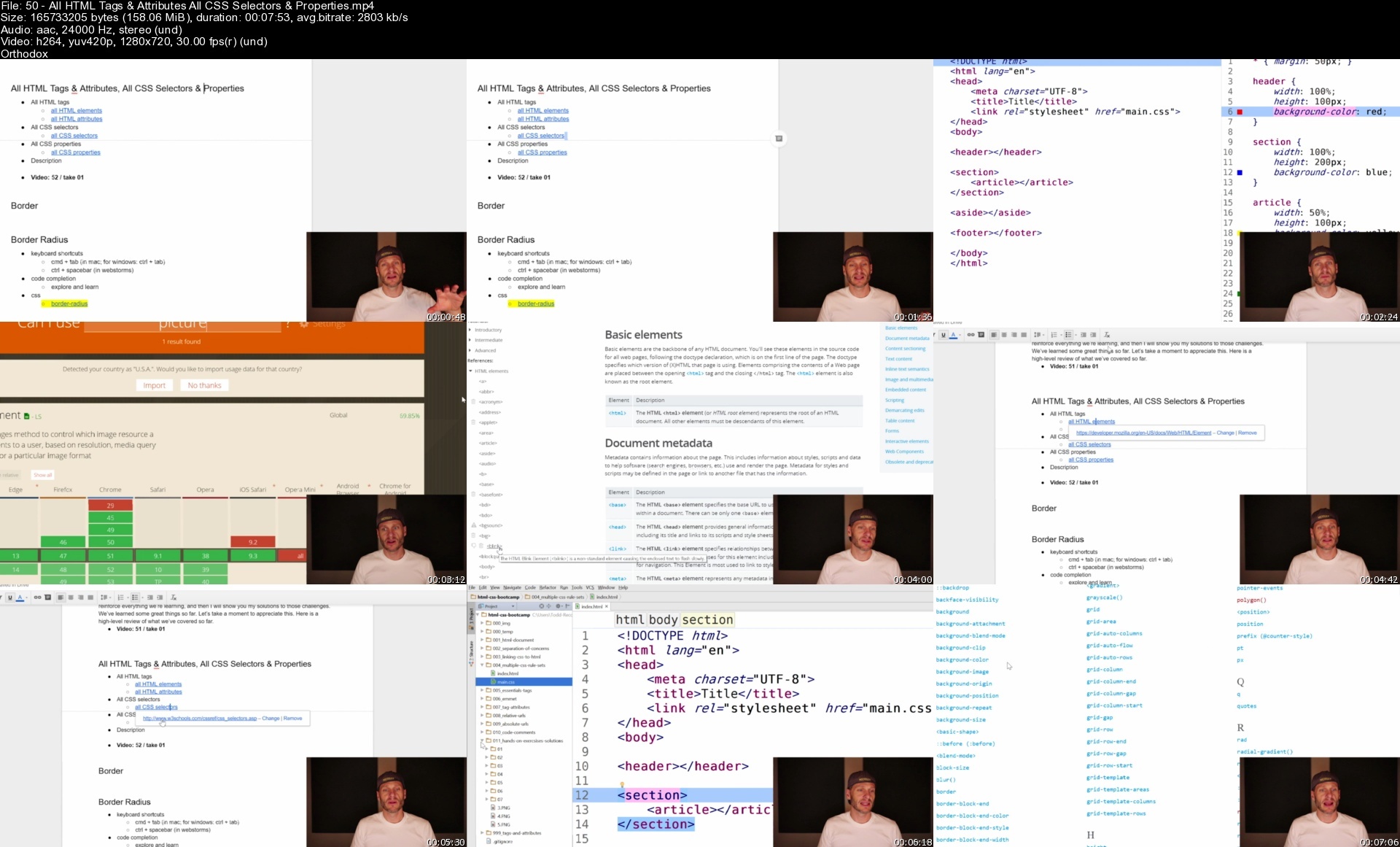

How To Create A Website: An Html Tutorial And Css Tutorial
Last updated 4/2022
MP4 | Video: h264, 1280x720 | Audio: AAC, 44.1 KHz
Language: English | Size: 20.28 GB | Duration: 31h 54m
Learn How To Make Websites - HTML - CSS - Flexbox - Transitions - Animations - SVGs - The Box Model - CSS Specificity
What you'll learn
Build beautiful webpages using today's best practices
Understand the importance of performance and build performant websites
Acquire an outstanding foundation in the fundamentals of web programming
Taught by a professor with 20 years of experience teaching individuals of all abilities
Achieve mastery in the understanding and application of HTML & CSS
Apply cutting-edge techniques such as Flexbox and SVGs
Requirements
No prerequisite knowledge is required to take this course. This course starts at the very beginning and will teach you everything you need to know to be an outstanding web developer.
Description
You can learn to build websites quickly and easily if it is taught correctly.This course will show you how to build websites. It will give you a solid foundation in building websites. By the end of this course, you will have strong skills in creating websites with HTML & CSS. As with any craft, the fundamentals are essential. If you have a strong foundation in the fundamentals, you will be poised to grow and develop professionally as a craftsperson who knows their craft.My name is Todd McLeod and I began creating websites in 1997. I began teaching how to create websites in 2001. I am tenured faculty in California and I have taught individuals of all ability levels how to create websites. After completing this course, you will have mastered the fundamentals of creating websites with HTML & CSS. Here are the highlights of what you will receive in this class:32 hours of on-demand videoExtensive hands-on exercisesSolutions to the hands-on exercisesAccess to all of the code used in the course74 exclusive resources which you can download286 page book on the fundamentals of HTML and CSSLifetime access to everything in this course100% money-back satisfaction guaranteeA certificate of completionHere are the highlights of what you will learn in this course:Learn the art of building websitesUnderstand what it takes to succeedDiscover Google's Teapot, how to change the news, and how to play the Dinosaur video gameGain insight into the history of the Internet and the World Wide WebLearn about the best documentation for building websitesUnderstand how the World Wide Web worksDiscover new ways to use your web browserAcquire the ability to highlight webpagesLearn all about developer toolsGain the ability to use an IDE (integrated development environment)Acquire the ability to use git and github for version controlLearn how to code in HTML and CSSGain a solid foundation in HTML and CSSAcquire the ability to use emmetUnderstand relative and absolute URLsLearn about CSS rule-sets and CSS selectorsLearn how to link CSS documents to HTML documentsLearn all about the layout of webpages including the box-model and flexboxGain the ability to work with older layout modalities such as position and floatMaster the nuances of CSS specificityGain the ability to correctly structure HTML documentsAcquire mastery over media-queriesLearn the "above the fold" design patternMaster using SVG's to optimize your images and make your sites more performantAcquire the ability to work with advanced techniques such as transitions and animationsIf you want to learn how to create websites, the first place to begin is with the fundamentals of HTML & CSS. The first place to begin is with this course. This class is guaranteed to teach you how to build websites. Once enrolled, you will have access to this Excel course for the rest of your life. Described as "fun" and "amazing" and "life changing," Todd McLeod's website course will forever transform your life. Try this course for yourself and see how quickly and easily you too can learn to build websites.
Overview
Section 1: Introduction
Lecture 1 Welcome
Lecture 2 Course outline
Lecture 3 Code resources
Lecture 4 How To Succeed
Lecture 5 The Art of Building Websites
Section 2: Getting Started
Lecture 6 Having Fun #1 - HTTP Status Codes
Lecture 7 Having Fun #2 - Making The News
Lecture 8 Having Fun #3 - The Dinosaur Video Game
Section 3: Understanding The Internet & World Wide Web
Lecture 9 History of the Internet
Lecture 10 History of the World Wide Web
Lecture 11 Who Controls the Internet & WWW?
Lecture 12 Web Documentation
Lecture 13 Highlighting Webpages & Chrome Extensions
Lecture 14 How The Web Works
Section 4: An Introduction to HTML
Lecture 15 Your First Webpage
Lecture 16 Anatomy of an HTML Page
Lecture 17 HTML Terminology
Section 5: An Introduction to CSS
Lecture 18 A Separation of Concerns
Lecture 19 CSS Rule-sets
Lecture 20 Linking CSS to HTML
Lecture 21 Multiple CSS Selectors
Section 6: Configuring Your Environment
Lecture 22 Integrated Development Environments
Lecture 23 WebStorm
Lecture 24 Atom.io
Lecture 25 Sublime
Lecture 26 Dreamweaver
Section 7: Becoming Skilled with Github
Lecture 27 Github Overview
Lecture 28 Git & Github - The Story
Lecture 29 Setting up git and github on Windows
Lecture 30 Setting up git and github on Mac
Lecture 31 Terminal Essentials
Lecture 32 Creating a "Master" Local Git Repository
Lecture 33 Creating an "Origin/Master" Remote Github Repository
Lecture 34 Using Github - Basic Commands
Lecture 35 Using Github - Deleting A Repo
Section 8: HTML Essentials
Lecture 36 Section Overview
Lecture 37 FIle Naming Conventions
Lecture 38 Folder Naming Conventions
Lecture 39 Opening A Project in Webstorm
Lecture 40 Essential Tags
Lecture 41 Emmet.io
Lecture 42 Modifying Webstorm Formatting
Lecture 43 Tag Attributes
Lecture 44 Relative URLs
Lecture 45 Absolute URLs
Lecture 46 Comments
Lecture 47 Hands-On Exercises
Lecture 48 Hands-On Exercises - Solutions
Section 9: CSS Essentials
Lecture 49 Section Overview
Lecture 50 All HTML Tags & Attributes, All CSS Selectors & Properties
Lecture 51 border Property
Lecture 52 border-radius Property
Lecture 53 display Property
Lecture 54 padding & margin Properties
Lecture 55 Box Model
Lecture 56 box-Sizing Property
Lecture 57 Review
Lecture 58 Hands-On Exercises
Lecture 59 Hands-On Exercises - Solutions
Section 10: CSS Selectors
Lecture 60 Section Overview
Lecture 61 CSS Resets
Lecture 62 CSS Selectors: element, class, id
Lecture 63 Selectors: attribute
Lecture 64 Selectors: pseudo-classes
Lecture 65 Selectors: pseudo-class :focus
Lecture 66 Selectors: pseudo-class nth child - part I
Lecture 67 Selectors: pseudo-class nth child - part II
Lecture 68 Selectors: pseudo-class typography
Lecture 69 Selectors: nested selectors
Lecture 70 margin: 0 auto & The Display Property
Lecture 71 Hands-On Exercise - The Surfer Page
Lecture 72 Hands-On Exercise - The Surfer Page - Solution
Lecture 73 Hands-On Exercises
Lecture 74 Hands-On Exercises - Solutions I
Lecture 75 Hands-On Exercises - Solutions II
Lecture 76 Review
Section 11: CSS Order & Specificity
Lecture 77 Section Overview
Lecture 78 The Browser's Application of CSS
Lecture 79 Challenge & Solution #1
Lecture 80 Challenge & Solution #2, 3, 4
Lecture 81 Challenge & Solution #5, 6
Lecture 82 Hands-On Exercise
Lecture 83 Hands-On Exercises - Solutions
Lecture 84 Review
Section 12: Formatting Text
Lecture 85 Section Overview
Lecture 86 font Property
Lecture 87 font-family Property
Lecture 88 font-size Property
Lecture 89 font-weight & font-style Properties
Lecture 90 font-variant & text-transform Properties
Lecture 91 line-height Property
Lecture 92 letter-spacing, word-spacing, & color Properties
Lecture 93 Google Fonts
Lecture 94 text-align & text-shadow Properties
Lecture 95 text-decoration Property &
Lecture 96 text-indent Property
Lecture 97 Hands-On Exercises
Lecture 98 Hands-On Exercises - Solutions
Lecture 99 Review
Section 13: Structuring Documents
Lecture 100 Section Overview
Lecture 101 Document Structure - Terminology
Lecture 102 Semantic HTML
Lecture 103 Hands-On Exercises - Semantic HTML
Lecture 104 Hands-On Exercises - Semantic HTML - My Solutions
Lecture 105 Semantic HTML - header, nav, main
Lecture 106 Semantic HTML - article, section
Lecture 107 Semantic HTML - aside & footer
Lecture 108 Semantic HTML - Examples
Lecture 109 Semantic HTML - headings - h1 - h6
Lecture 110 Semantic HTML - figure, figcaption
Lecture 111 Hands-On Exercises
Lecture 112 Hands-On Exercises - Solutions
Lecture 113 Hands-On Exercises - Learning HTML Elements - My Solutions
Lecture 114 Review
Section 14: Layout Fundamentals - Box Model & Display
Lecture 115 Section Overview
Lecture 116 Layout Resources & Review
Lecture 117 Display Property Review
Lecture 118 Hands-On Exercise - Page of Divs
Lecture 119 Hands-On Exercise - Page of Divs - Solution
Lecture 120 Hands-On Exercise - Horizontal Menu
Lecture 121 Hands-On Exercise - Horizontal Menu - Solution
Lecture 122 Taco Shop - Display Property
Lecture 123 Review
Section 15: Layout with Flexbox
Lecture 124 Section Overview
Lecture 125 Understanding Flexbox - Container & Items
Lecture 126 Containers & Creating A Flex Container
Lecture 127 Container Property: flex-wrap
Lecture 128 Container Property: flex-direction (primary-axis & cross-axis)
Lecture 129 Container Property: flex-flow
Lecture 130 Container Property: justify-content
Lecture 131 Container Property: align-items
Lecture 132 Container Property: align-content
Lecture 133 Item Property: align-self
Lecture 134 Item Property: order
Lecture 135 Item Property: flex-grow
Lecture 136 Item Property: flex-shrink
Lecture 137 Item Property: flex-basis
Lecture 138 Item Property: flex
Lecture 139 Hands-On Exercise - Flexbox Froggy
Lecture 140 Hands-On Exercises
Lecture 141 Hands-On Exercises - Solutions - 8 Pages
Lecture 142 Hands-On Exercises - Solutions - 6 Pages
Lecture 143 Review
Section 16: Media Queries
Lecture 144 Section Overview
Lecture 145 Understanding Media Queries
Lecture 146 Min-Width & Max-Width
Lecture 147 Print Media Query
Lecture 148 Media Type & Expressions
Lecture 149 Taco Shop & Scaling Font - Examples
Lecture 150 Responsive Design & Mobile First Design
Lecture 151 Hands-On Exercises
Lecture 152 Hands-On Exercises - Solutions
Lecture 153 Review
Section 17: Flexbox Design Patterns
Lecture 154 Section Overview
Lecture 155 Google's Flexbox Design Pattern #1
Lecture 156 Google's Flexbox Design Pattern #2
Lecture 157 Google's Flexbox Design Pattern #3
Lecture 158 Hands-On Exercises
Lecture 159 Hands-On Exercises - Solutions
Lecture 160 Flexbox Example #1 - Responsive Menu
Lecture 161 Flexbox Example #2 - Above The Fold
Lecture 162 Flexbox Example #3 - Holy Grail Example
Lecture 163 Flexbox Example #4 - Holy Grail Redux
Lecture 164 Hands-On Exercises
Lecture 165 Review
Section 18: Layout with Position
Lecture 166 Section Overview
Lecture 167 Layout Essentials - A Quick Reference
Lecture 168 Position Overview
Lecture 169 Position Fixed
Lecture 170 Position Relative
Lecture 171 Position Absolute
Lecture 172 Taco Shop - Position Property
Lecture 173 Hands-On Exercises
Lecture 174 Hands-On Exercises - Solutions
Lecture 175 Review
Section 19: Layout with Float
Lecture 176 Section Overview
Lecture 177 Float Images & Overflow: Auto
Lecture 178 Float Layout & Clearing Floats
Lecture 179 Float Example - Holy Grail
Lecture 180 Taco Shop - Float Property
Lecture 181 Hands-On Exercises
Lecture 182 Hands-On Exercises - Solutions
Lecture 183 Review
Section 20: Background
Lecture 184 Section Overview
Lecture 185 Background Color
Lecture 186 background-image, background-repeat, background-size
Lecture 187 background-position, background-origin
Lecture 188 background-attachment
Lecture 189 background
Lecture 190 Hands-On Exercises
Lecture 191 Hands-On Exercises - Solutions
Lecture 192 Review
Section 21: Refactor Challenge
Lecture 193 Section Overview
Lecture 194 Analyzing The Starting Files
Lecture 195 inline-block Refactor
Lecture 196 flexbox Refactor
Section 22: Full-Page Above-The-Fold
Lecture 197 Section Overview
Lecture 198 Step #1: HTML Structure
Lecture 199 Step #1: HTML Structure - Solution
Lecture 200 Step #2: Layout
Lecture 201 Step #2: Layout - Solution
Lecture 202 Step #3: background image
Lecture 203 Step #3: background image - Solution
Lecture 204 Step #4: Format Text
Lecture 205 Step #4: Format Text - Solution
Lecture 206 Step #5: Style The Button
Lecture 207 Step #5: Style The Button - Solution
Lecture 208 Step #6: Mobile
Lecture 209 Step #6: Mobile - Solution
Lecture 210 Review
Section 23: Expanding Your Skillset
Lecture 211 Section Overview
Lecture 212 q, blockquote, & cite elements; cite attribute
Lecture 213 pre, samp, code, kbd, abbr elements
Lecture 214 HTML Entities
Lecture 215 Linking Images & Bookmarks
Lecture 216 box-shadow Property
Lecture 217 vertical-align property
Lecture 218 mobile devices - mobile history & font-boosting
Lecture 219 mobile devices - meta viewport width=device-width
Lecture 220 mobile devices - meta viewport initial-scale=1
Lecture 221 meta viewport - picture example
Lecture 222 Review
Section 24: Graphics
Lecture 223 Section Overview
Lecture 224 Colors
Lecture 225 Picking Color Combinations - Adobe Color ( Kuler )
Lecture 226 Image Types - Raster/Bitmap & Vector
Lecture 227 Font Awesome
Lecture 228 Font Awesome - Performance
Lecture 229 Font Awesome - Instructions on Use Review
Lecture 230 Font Awesome to SVG - Adobe Illustrator
Lecture 231 Understanding SVG - Basic SVG Shapes
Lecture 232 SVG Terminology
Lecture 233 SVG Path Element
Lecture 234 SVG Path - More Examples
Lecture 235 SVG Stroke & Fill
Lecture 236 SVG - Notes & Resources
Lecture 237 SVG - Viewbox
Lecture 238 Styling SVGs with CSS
Lecture 239 SVG - Symbol & Use Elements
Lecture 240 Symbol, Use, & CSS
Lecture 241 Symbol with Multiple Paths
Lecture 242 Leave Room For Strokes
Lecture 243 Stroke %
Lecture 244 symbol & use vs img
Lecture 245 Review
Section 25: Full-Page Background
Lecture 246 Section Overview
Lecture 247 Fixed Header
Lecture 248 Fixed Header - Solution
Lecture 249 Header Containers
Lecture 250 Header Containers - Solution
Lecture 251 Make SVG'S
Lecture 252 Make SVG'S - Solution
Lecture 253 Insert SVGs
Lecture 254 Insert SVGs - Solution
Lecture 255 Style SVGs - Solution
Lecture 256 Dev Tools Styling & Company Naming - Solution
Lecture 257 Adding Links & Style - Solution
Lecture 258 Responsive, Mobile-First
Lecture 259 Responsive, Mobile-First - Solution
Lecture 260 Mobile Menu
Lecture 261 Mobile Menu - Solution
Lecture 262 Review
Section 26: Favicon
Lecture 263 Section Overview
Lecture 264 Create An Image
Lecture 265 Generate Favicon
Lecture 266 Generate Favicon - Subfolder
Lecture 267 Generate Favicon - Clears Cache
Lecture 268 Generate Favicon - Compression
Lecture 269 Favicon Essentials
Lecture 270 Full Page Background - Favicon
Lecture 271 Review
Section 27: Flexbox Practicum - Part 1
Lecture 272 Section Overview
Lecture 273 Counter
Lecture 274 Counter - Solution
Lecture 275 Tab Menu
Lecture 276 Tab Menu - Solution
Lecture 277 Header Menu
Lecture 278 Header Menu - Solution
Lecture 279 Review
Section 28: Transitions & Animations
Lecture 280 Section Overview
Lecture 281 Transitions
Lecture 282 Transition Examples
Lecture 283 Animations
Lecture 284 Animation Examples & Hands-On Exercise
Lecture 285 Hands-On Exercise Solution & Another Hands-On Exercise
Lecture 286 Hands-On Exercise Solution
Lecture 287 Transform & Animations
Section 29: Flexbox Practicum - Part 2
Lecture 288 Section Overview
Lecture 289 Footer Saving - Solution
Lecture 290 Sidebar Menu - Solution
Lecture 291 Welcome Page - Solution
Lecture 292 Dial Icon - Solution
Lecture 293 Feature List - Solution
Lecture 294 Card - Solution
Lecture 295 Card Group - Solution
Section 30: You Are A Hero
Lecture 296 Section Overview
Lecture 297 Above-The-Fold Flexbox Practice
Lecture 298 Side-Bar Fly-Out
Lecture 299 Linear-Gradient
Lecture 300 Audio & video
Lecture 301 Markdown
Lecture 302 Vendor Prefixes, AutoPrefixer, Task-Runners Gulp & Grunt
Lecture 303 Publishing Your Site - An Overview
Lecture 304 Publishing Your Site - Buying A Domain
Lecture 305 Publishing Your Site - Google Cloud
Lecture 306 Publishing Your Site - Google Cloud II
Lecture 307 Review
Section 31: Forms
Lecture 308 Section Overview
Lecture 309 The Form Element
Lecture 310 The Input Element
Lecture 311 The Label Element
Lecture 312 The Input Element - Types
Lecture 313 textarea, select, option, optgroup
Lecture 314 fieldset & legend
Lecture 315 Form Examples, progress, meter
Lecture 316 Review
Section 32: Now Go Build It
Lecture 317 Overview of Three Projects
Lecture 318 Game Plan - Contractor Website
Lecture 319 Starting Files - Contractor Website
Lecture 320 Game Plan - Travel Website
Lecture 321 Starting Files - Travel Website
Section 33: Farewell & Next Steps
Lecture 322 Congratulations!
Lecture 323 Bonus lecture
This is a first semester university level course.,This course is ideal for beginners wanting to learn how to build websites.,This course is perfect for experienced developers wanting a thorough introduction to current best-practices.,This course is perfect for experienced developers wanting to fill in gaps in their knowledge.
Homepage









